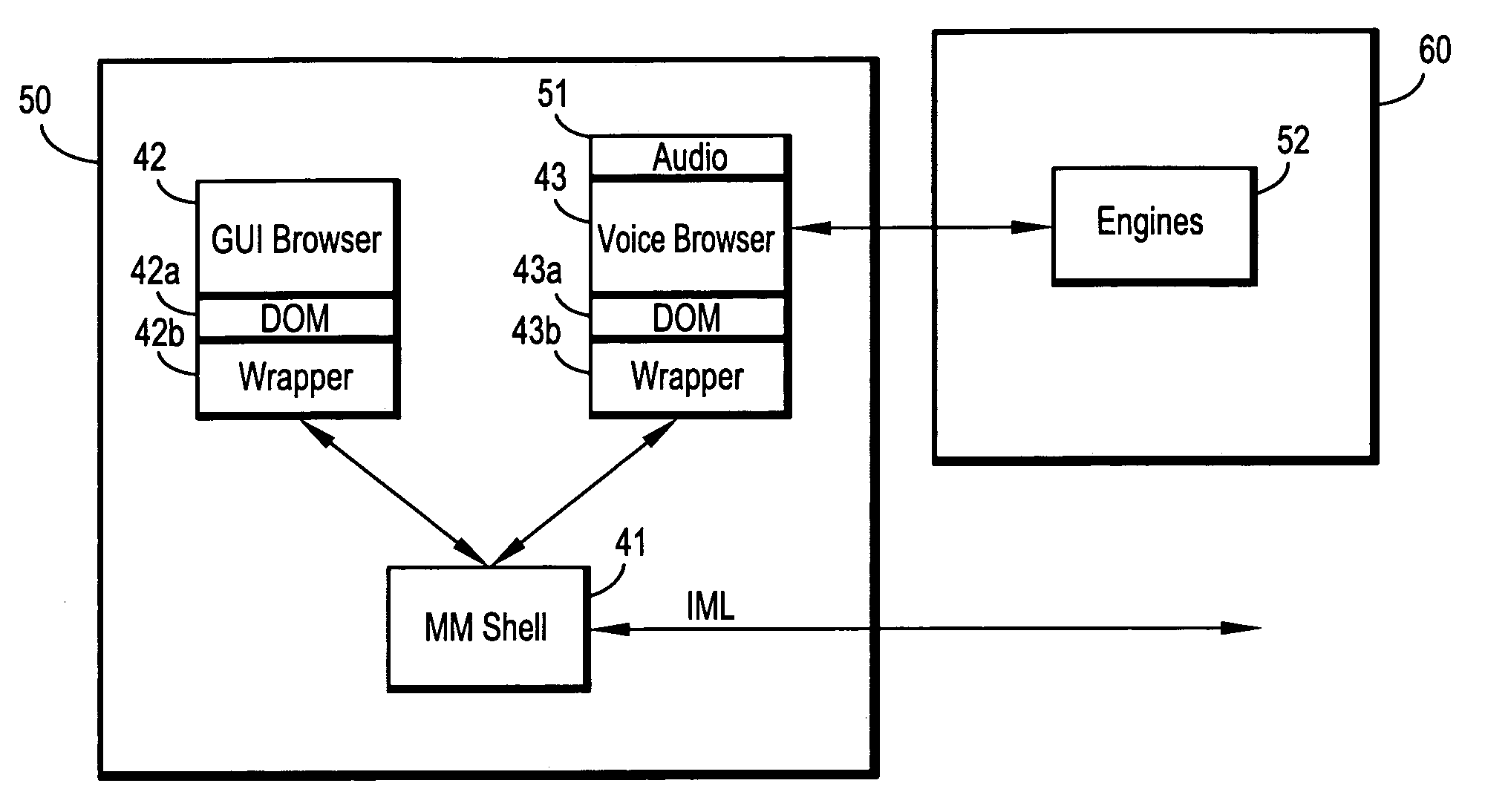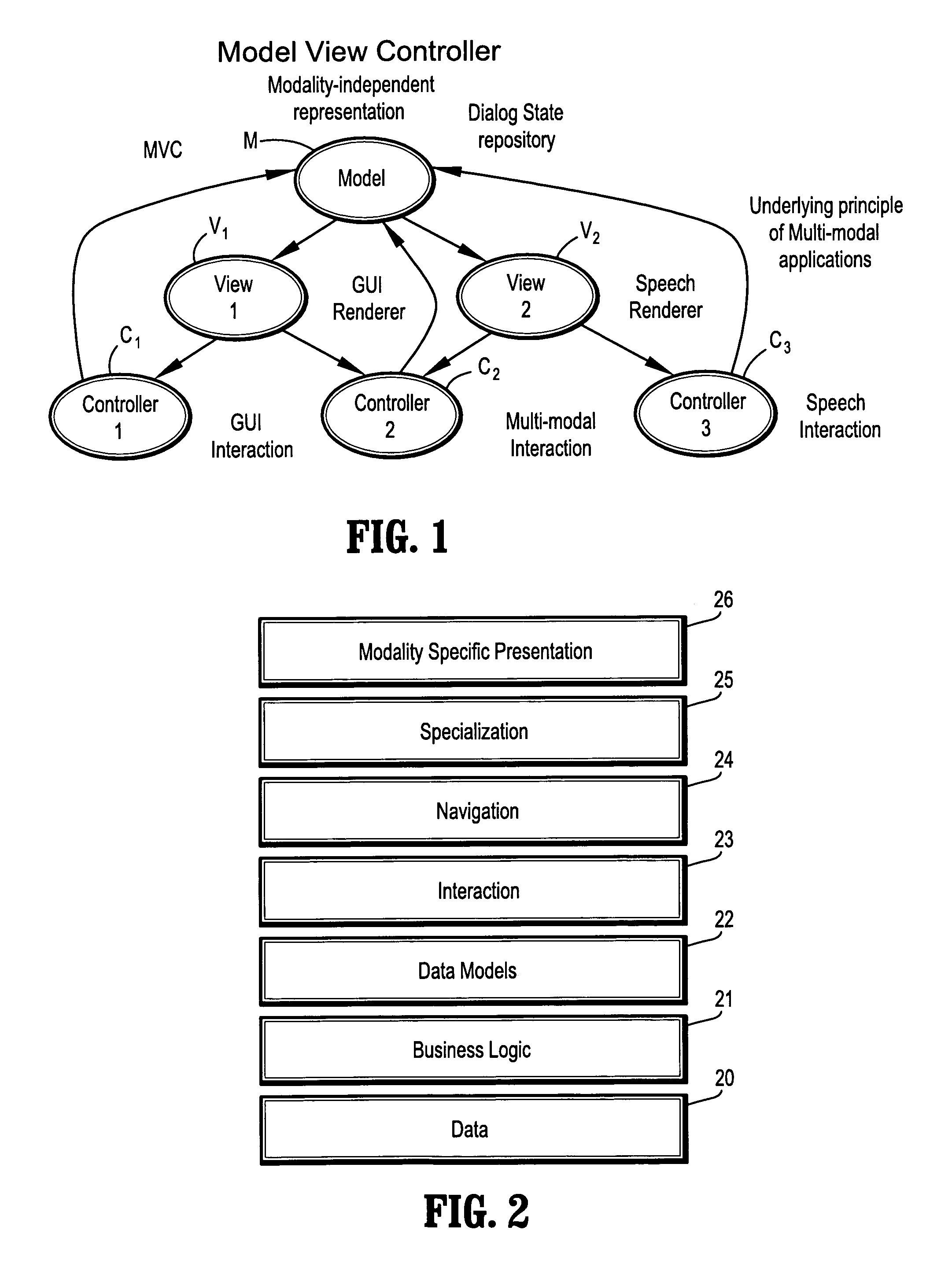Systems and methods for implementing modular DOM (Document Object Model)-based multi-modal browsers
a multi-modal browser and document object technology, applied in the field of systems and methods for building multi-modal browsers, can solve the problems of not being able the current networking infrastructure is not configured to provide seamless multi-modal access to information, and the availability of such information
- Summary
- Abstract
- Description
- Claims
- Application Information
AI Technical Summary
Benefits of technology
Problems solved by technology
Method used
Image
Examples
Embodiment Construction
[0061]The present invention relates generally to systems and methods for building multi-modal user interfaces and applications, and in particular, to systems and methods for building modular multi-modal browsers based on a DOM (Document Object Model) and MVC (Model-View-Controller) framework that enables a user to interact in parallel with the same information via a multiplicity of channels, devices, and / or user interfaces, while presenting a unified, synchronized view of such information across the various channels, devices and / or user interfaces supported by the multi-modal browser
[0062]The following detailed description of preferred embodiments is divided into the following sections for ease of reference:
[0063]Section I below provides a general description of features and functionalities of a multi-modal browser according to the present invention, as well as the need, motivation and advantages of implementing a MVC and DOM-based multi-modal browser framework according to the pres...
PUM
 Login to View More
Login to View More Abstract
Description
Claims
Application Information
 Login to View More
Login to View More - R&D
- Intellectual Property
- Life Sciences
- Materials
- Tech Scout
- Unparalleled Data Quality
- Higher Quality Content
- 60% Fewer Hallucinations
Browse by: Latest US Patents, China's latest patents, Technical Efficacy Thesaurus, Application Domain, Technology Topic, Popular Technical Reports.
© 2025 PatSnap. All rights reserved.Legal|Privacy policy|Modern Slavery Act Transparency Statement|Sitemap|About US| Contact US: help@patsnap.com



